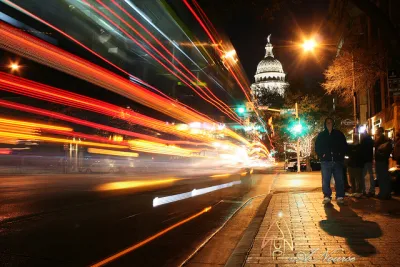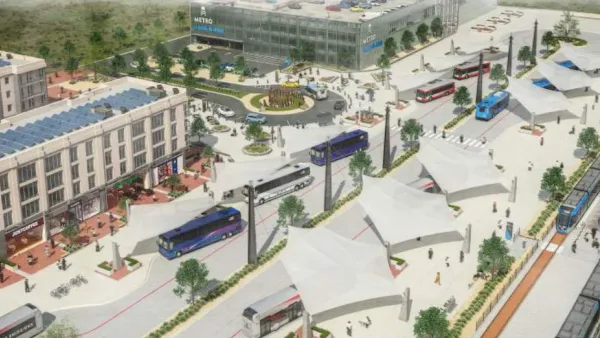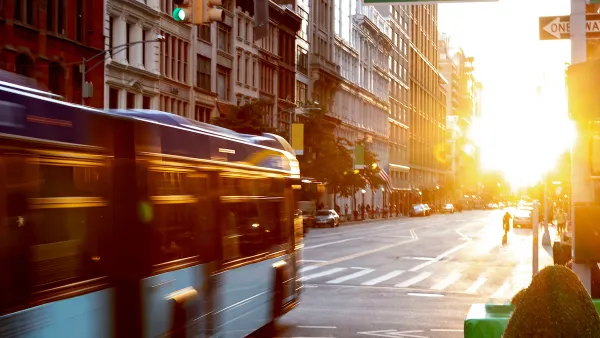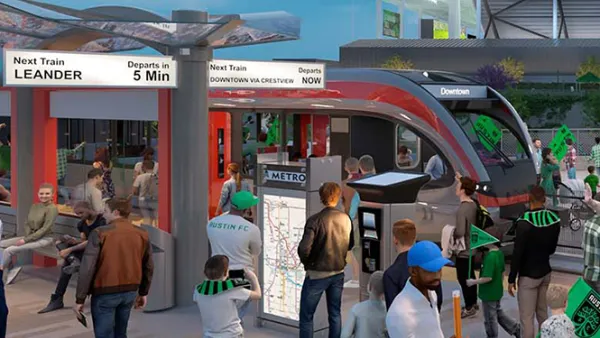The city's ambitious transit plan will bring light rail and bus connections to more areas of the city.

Tina Bellon reports on Austin's efforts to build out their transit system and the questions surrounding potential ridership. The city plans to spend close to $20 billion on infrastructure that includes a $7.1 billion project that would connect the north, south, and east parts of the city by light rail and significantly expand bus routes. With a more reliable and comprehensive system in place, city officials hope more people will choose transit over cars to reduce traffic and pollution in the increasingly congested city.
But skeptics like Gerald Daugherty, a former Republican commissioner in Travis County, argue that Austinites won't give up their cars that easily, with only 4 percent of residents using public transit before the pandemic. Daugherty supports road-based solutions such as clean vehicles and dedicated bus lanes, in addition to road expansion like the controversial I-35 project.
Austin is also revising its zoning and land use code to encourage denser development and increase housing supply near employment and transit centers.
FULL STORY: Car-centric Austin is building transit. Will anyone ride it?

National Parks Layoffs Will Cause Communities to Lose Billions
Thousands of essential park workers were laid off this week, just before the busy spring break season.

Retro-silient?: America’s First “Eco-burb,” The Woodlands Turns 50
A master-planned community north of Houston offers lessons on green infrastructure and resilient design, but falls short of its founder’s lofty affordability and walkability goals.

Delivering for America Plan Will Downgrade Mail Service in at Least 49.5 Percent of Zip Codes
Republican and Democrat lawmakers criticize the plan for its disproportionate negative impact on rural communities.

Test News Post 1
This is a summary

Test News Headline 46
Test for the image on the front page.

Balancing Bombs and Butterflies: How the National Guard Protects a Rare Species
The National Guard at Fort Indiantown Gap uses GIS technology and land management strategies to balance military training with conservation efforts, ensuring the survival of the rare eastern regal fritillary butterfly.
Urban Design for Planners 1: Software Tools
This six-course series explores essential urban design concepts using open source software and equips planners with the tools they need to participate fully in the urban design process.
Planning for Universal Design
Learn the tools for implementing Universal Design in planning regulations.
EMC Planning Group, Inc.
Planetizen
Planetizen
Mpact (formerly Rail~Volution)
Great Falls Development Authority, Inc.
HUDs Office of Policy Development and Research
NYU Wagner Graduate School of Public Service





























